Chechnya, Russia and 20 years of conflict
How the tiny region shaped post-Soviet Russia on the 20th anniversary of the start of first Chechnya war.
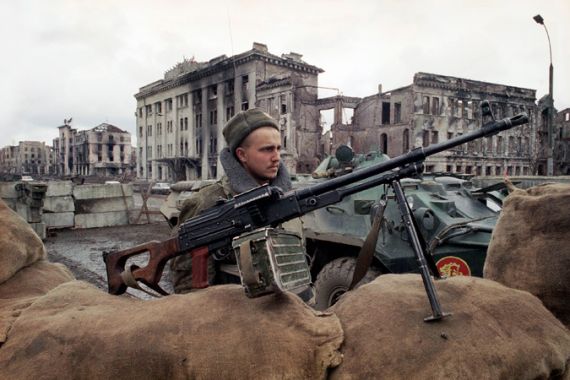
Moscow, Russia – Twenty years ago on Thursday, Moscow started what it thought would be a “blitzkrieg” against secular separatists in Chechnya, a tiny, oil-rich province in Russia’s North Caucasus region that had declared its independence.
But the first Chechen war became Russia’s Vietnam; the second war was declared a victory only in 2009. The two conflicts have reshaped Russia, Chechnya, their rulers – and those who oppose them.
In 1994, shortly after Moscow invaded Chechnya in an effort to restore its territorial integrity, Akhmad Kadyrov, a bearded, barrel-chested Muslim scholar turned guerrilla commander, declared jihad on all Russians and said each Chechen should kill at least 150 of them.
That was the proportion of the populations on each side of the conflict: some 150 million Russians and less than a million Chechens in a small, landlocked province, which the separatists wanted to carve out of Russia.
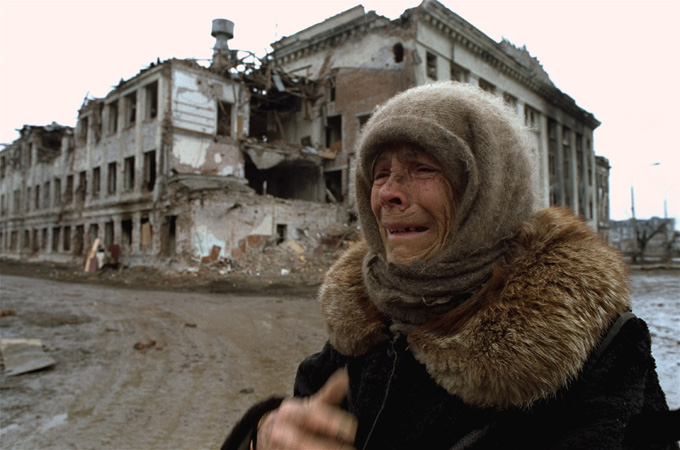 |
| Both sides committed atrocities in Chechnya, and the eventual retreat humiliated the once-mighty Russian military [AP] |
Western media and politicians dubbed the Chechens “freedom fighters” – an army of Davids fighting the Russian Goliath.
Moscow was lambasted internationally for disproportionate use of force and rolling back on the democratic freedoms that former leader Boris Yeltsin was so eager to introduce after the 1991 Soviet Union collapse.
Tens of thousands died amid atrocities committed by both sides – and many more were displaced before 1996, when the Russians retreated, leaving Chechnya essentially independent.
Retreating was a humiliation for Russia’s military machine that less than a decade earlier had presented a seemingly formidable threat to the entire Western world.
Chechen against Chechen
Independence did not quite work out for the Chechens. The separatist government based in the ruined capital, Grozny, lost control over the rest of Chechnya.
Feuding field commanders and foreign jihadists, such as the Saudi known as Emir al-Khattab, ruled small districts with their own little armies. Kidnappings for ransom – along with primitive extraction of oil – were their main sources of income.
Many of the foreigners adhered to a puritanical Muslim ideology known as Wahhabism that ran counter to Chechnya’s Sufi traditions.
Akhmad Kadyrov, who was appointed as top Mufti of Chechnya, came into opposition with the puritans and their Chechen supporters, because he saw their extremist views as a threat to the separatist movement. In 1998, Kadyrov openly renounced the Wahhabis – and barely survived the first of many assassination attempts.
Kadyrov soon switched alliances, siding with the people upon whom he had once declared war – the Russians.
A virtually unknown ex-KBG officer, Vladimir Putin became Russia’s new prime minister in August 1999 and within weeks led a military operation against the Chechen fighters.
RELATED: Timeline: Attacks in Russia
When a series of explosions in apartment buildings in Moscow and two Russian towns killed more than 300 Russians, Moscow blamed Chechen rebels and embarked on an epic “anti-terrorist operation,” which became the second Chechen war.
Putin’s approval ratings skyrocketed, paving the way for his first presidency. Aided by Kadyrov and other Chechen clans who had pledged allegiance to the Kremlin, the Russian military quickly returned most of Chechnya to Moscow’s control. In 2003, Kadyrov was elected Chechen president.
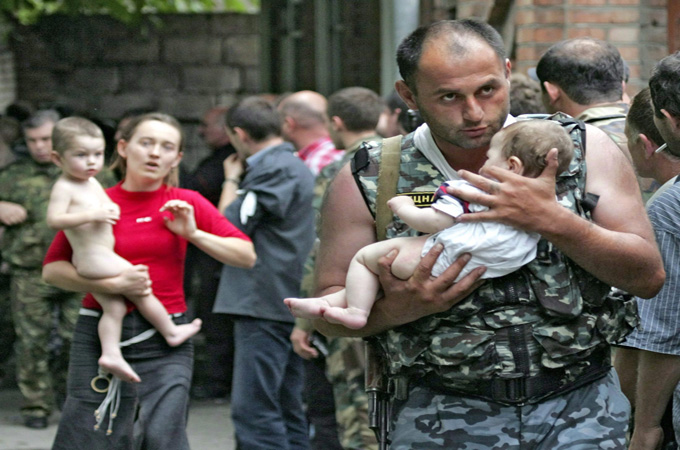 |
| Nearly 200 children perished in the Beslan hostage crisis [EPA] |
Russian targets
Cornered in Chechnya, the separatists took the war to Russia.
Attacks throughout the country became a grim reality of the new war and involved explosions in cities and towns, on planes and public transport.
At least two dozen attacks were carried out by female suicide bombers. Dubbed “black widows”, they became a sinister image imprinted on Russia’s collective psyche.
One such attack killed Akhmad Kadyrov in May 2004. His son, 27-year-old Ramzan Kadyrov, was too young to run for president at the time, but as head of his father’s security service, he quickly became Chechnya’s de facto ruler. In 2007, soon after he turned 30, the younger Kadyrov was elected president.
Four months after his father’s assassination, Chechen separatists seized a public school in the town of Beslan taking more than 1,000 hostages, mostly children. Almost 200 kids died when Russian forces stormed the school. The incident changed the world’s attitude towards the Chechen cause – “freedom fighters” became “Islamic insurgents” in the Western media.
Meanwhile, the media in Russia came under attack.
“The saying was that it was journalists who won the first Chechen war,” says Tatyana Lokshina, deputy director of the Moscow branch of Human Rights Watch, an international rights watchdog.
Moscow used unfavourable media coverage of the war as an excuse to curtail press freedoms. The Kremlin took over all national television networks and most major newspapers.
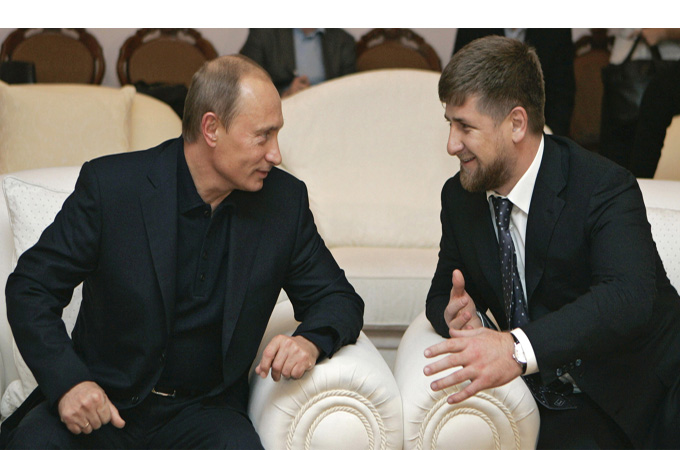 |
| Putin and Ramzan Kadyrov [AP] |
“For years, Vladimir Putin saw the pacification of Chechnya as his main achievement,” says Stanislav Belkovsky, a Moscow-based political analyst. “In that respect, Putin has a colossal psychological dependency on Chechnya and Ramzan Kadyrov who ensured the pacification.”
The Beslan crisis also served as a pretext to tighten political screws in Russia. Putin eliminated regional gubernatorial elections, complicated participation of opposition parties in elections, and limited democratic freedoms.
The public hailed Putin for bringing stability and pacifying Chechnya. The victory revived Moscow’s imperial ambitions – at least in the area of the former Soviet Union.
Shaping today’s Russia
Moscow won the brief 2008 Russo-Georgian war over the breakaway Georgian province of South Ossetia. In March 2014, Russia took over Crimea from Ukraine and helped unleash a civil war between pro-Russian separatists and the central Ukrainian government just a month later.
Both Chechen wars became systemic factors in shaping today's Russia. Instead of peaceful development inside the country we moved to the priority of external expansion
“Both Chechen wars became systemic factors in shaping today’s Russia,” says Belkovsky. “Instead of peaceful development inside the country, we moved to the priority of external expansion.”
Putin declared “the counter-terrorism operation” in Chechnya over in 2009 – just when things in North Caucasus took a turn for the worse.
Dagestan and several other provinces in the region became the new hotbeds of radical Islamism. A new generation of Moscow’s foes did not want secular separation – instead they are fighting to establish a “Caucasus Emirate” that includes adjacent Russian regions with sizable Muslim populations.
At least 529 people were killed and 457 wounded in North Caucasus in 2013, according to Kavkazsky Uzel, a Russian web portal that monitors the situation in the region. The confrontation has turned into “Europe’s most active armed conflict” , according to the International Crisis Group, a conflict-monitoring organisation.
The insurgency became self-sustaining because of a vicious circle perpetuated by corruption and brutality.
Federal forces and police trigger the violence with extra-judicial killings, arrests, kidnappings and other abuses, according to rights groups and critics. They claim young men have no other options but to join the rebels because corrupt officials blacklist their families to extort bribes.
The fighters, in turn, blackmail corrupt officials who embezzle lavish funds from Moscow. The practise involves “sending a flash card” containing a video message in which bearded men demand a “jihad tax”.
Storming Grozny again
Ramzan Kadyrov was, perhaps, the least attentive man in the crowd of about 1,100 officials in an opulent Kremlin hall on December 4 during Putin’s annual address. The stocky 38-year-old Chechen leader fidgeted in his seat and constantly checked his phone.
Just hours before the Kremlin ceremony, a dozen Islamist fighters attacked Grozny, Chechnya’s newly-rebuilt capital. Shootouts in a publishing house, an empty school, and an office building killed 11 insurgents and 14 law enforcement officers.
A day after the attack, Kadyrov said the attackers’ families should be thrown out of Chechnya, their houses destroyed. At least six houses that belonged to relatives of the Grozny attackers have been burned down by masked men, Lokshina of Human Rights Watch said.
Kadyrov’s threats were not new to Chechens. During the second Chechen war, he led paramilitary squads known as kadyrovtsy that soon gained notoriety for abducting, torturing and killing separatists and civilians suspected of aiding them, according to human rights groups and survivors.
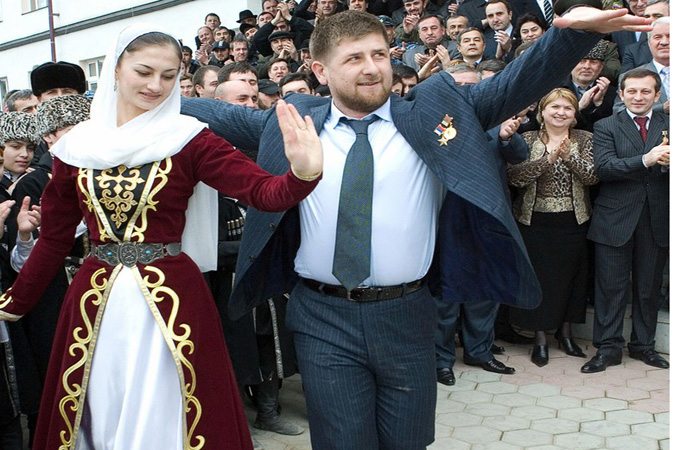 |
| Chechen leader Kadyrov led the paramilitary squads known as kadyrovtsy that soon gained notoriety for abducting, torturing and killing separatists and civilians [AFP] |
A string of his political enemies and critics, including a former bodyguard, an investigative reporter, and a human rights activist have been gunned down in Chechnya, Moscow, Austria, and Dubai.
Kadyrov denied involvement in the contract-style killings.
Over the years, Kadyrov developed a penchant for luxury – he has a private zoo, race horses, and numerous sports cars. Pop stars, Hollywood actors and sportsmen show up at concerts held on his birthday.
His portraits are seen on billboards, government buildings and schoolchildren’s lapel pins; while streets, schools, mosques and military units are named after his father and mother.
Whatever he does is breaking news on Chechen television – he is shown threatening rebels and corrupt officials, boxing with his ministers, welcoming foreign dignitaries,and bestowing money, apartments and cars upon average Chechens.
Some say Kadyrov’s lifestyle and political ways make him look like an eccentric sovereign, not a public official on the Kremlin payroll.
“Today, Chechnya is a de facto independent state,” says Belkovsky. “Although formally [Kadyrov] shows loyalty to Putin and formally Chechnya is part of Russia.”